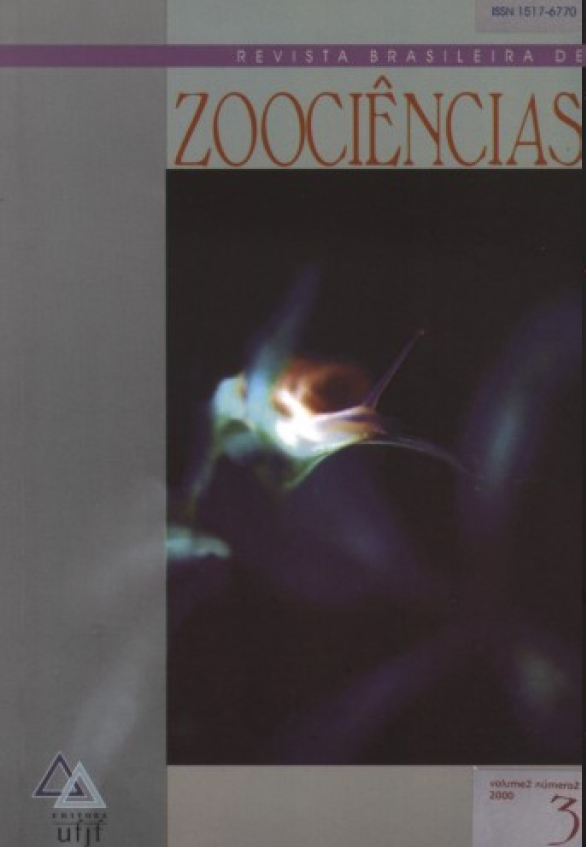Ecologia da comunidade de metazoários parasitos do peixe-espada Trichiurus lepturus Linnaeus (Osteichthyes, Trichiuridae) do litoral do estado do Rio de Janeiro, Brasil
Resumo
Fifty-five specimens of the Atlantic cutlassfish, Trichiurus lepturus Linnaeus, 1758 (Osteichthyes: Trichiuridae) collected from Cabo Frio, coastal zone of the State of Rio de Janeiro, Brazil (23°S, 42°W), from January to November 1999, were necropsied to study their infracommunities of metazoan parasites. Eighteen species of metazoan parasites were collected. All fishes were parasitized with atleast one species of metazoan. A total of 63.654 parasites were collected, with average of 1.157,3/fish. The digenean Lecithochirium microstomum Chandler, 1935 was the majority (73.7%) of the parasite specimens collected, and showed highest values of frequency of dominance and mean relative dominance. The parasite species of T. lepturus showed the typical overdispersed pattern of distribution. Anisakis sp., Raphidascaris sp., and Metacaligus uruguayensis Thomsen, 1949 had a positive correlation between the host’s total length and abundance. One monogenean and two cestodes species showed correlation
in their abundances and prevalences in relation to sex of the hosts. The mean species diversity in the parasite infracommunities of T. lepturus was H= 0.689±0.281, with correlation with the host’s total length and without
difference between male and female fish. One pair of ectoparasites and five pairs of endoparasites larval species showed positive covariation between their abundances. The parasite community of T. lepturus is apparently a little ordered species complex, characterized
by the presence of dominant species in the ectoparasite and endoparasite infracommunities.
Downloads
Não há dados estatísticos.
Downloads
Publicado
2009-09-09
Edição
Seção
Artigos



